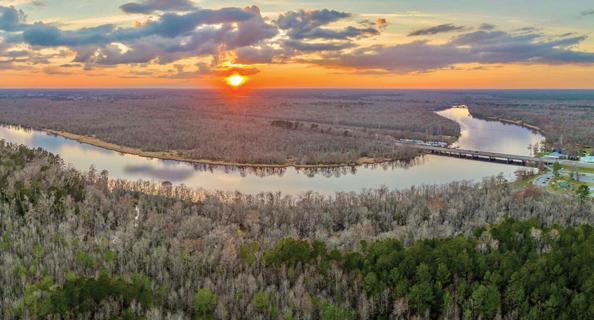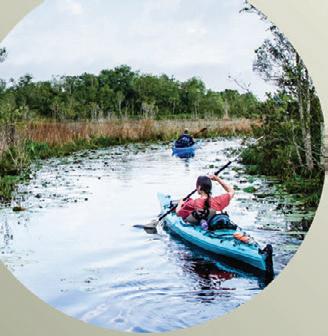
2 minute read
THE Riverkeeper Report
Compiled by Meaghan Gerard Communications & Administrative Director Ogeechee Riverkeeper meaghan@ogeecheeriverkeeper.org
Georgia Environmental Protection Division just completed a 60-day public comment period seeking input on whether or not the state should issue a permit for a proposed heavy mineral sand mine on Trail Ridge – 3 miles from the Okefenokee Swamp and 5 miles from the St. Marys River. There are concerns that the proposed mine will negatively impact the St. Marys River watershed ecosystem. The St. Marys River and its headwaters, the Okefenokee Swamp, are pristine waterways and are too important to risk with untested mining methods from a company that does not have experience in greenfield mining and has a negative track record of environmental stewardship. www.stmarysriverkeeper.org/
Advertisement
April is membership month for Ogeechee Riverkeeper. Supporters are the cornerstone of ORK’s work and ensure that ORK can continue our efforts throughout the watershed. There is strength in numbers and our power is multiplied when ORK can show a lawmaker or judge that the organization is advocating on behalf of hundreds of households.

Membership and donations not only protect the water but donors gain access to exclusive membership perks, including access to members-only events like guided paddles, plant walks, and more! There are options for annually recurring donations, donor-advised funds, planned giving, and corporate sponsorships as well.
With support, ORK has:
◆ Set up comprehensive monitoring stations around the Hyundai megasite
◆ Created a citizen tool kit for responsible development
◆ Pushed for legislation changes around ‘soil amendments’ to control chicken sludge
◆ Added litter traps in Savannah and Statesboro
◆ Led a comprehensive project to Protect the Vernon River
◆ Provided educational opportunities and virtual recreational resources
◆ Welcomed new staff, including an upper watershed representative and a legal director www.ogeecheeriverkeeper.org/join
Visit The Swamp
Contributed By BoatUS
Waters have been getting deeper, improving navigation, safety and vessel access along the 1,100-plus-mile Atlantic Intracoastal Waterway since Congress began investing in the waterway as a continuous system across state boundaries and U.S. Army Corps of Engineers Districts. Before the waterway was recognized as Marine Highway 95 by the U.S. Department of Transportation, severe shoaling and thin waters in certain locations were threatening safe navigation and the passage of vessels.
Since 2016, the estimated $120 million bill for dredging costs to return the waterway to its originally authorized width and depth has been halved, with projects completed from New Jersey to Florida. More recently, the 2021 Bipartisan Infrastructure Law (BIL, formerly known as the Infrastructure Investment & Jobs Act) delivered $20.25 million in additional funding for upland placement area maintenance in North Carolina. BIL will also fund an additional $7.47 million in New Jersey dredging projects.
The job isn’t done, however, and at the recent annual flyin to meet with Congressional representatives, in Washington, D.C., Atlantic Intracoastal Waterway Association (AIWA) board members stressed efforts needed to address the still-significant backlog of unmet dredging needs.
“AIWA’s efforts showing the importance of continued commercial and recreational vessel activity along America’s Marine Highway 95 is having an impact,” said AIWA executive director Brad Pickel, “But there is still work to do.”
More recent waterway funding projects have addressed the need for important maintenance on upland areas where dredge material is deposited. “Without these upland locations we cannot continue to dredge and keep the channel clear,” said Pickel.



Joining AIWA in Capitol Hill legislator and staff discussions were representatives from BoatUS, National Marine Manufacturers Association, and other AIWA board members.
BoatUS government affairs manager and AIWA board member David Kennedy added, “In the last 10 years, we have done a good job helping the U.S. Army Corps of Engineers identify unmet dredging needs. We want to ensure evolving trouble spots are also identified.”
Pickel, Kennedy and other AIWA board members met with 12 congressional offices including Reps. Nancy Mace (SC), Jen Kiggans (VA), Buddy Carter (GA) and Greg Murphy, M.D. (NC). “We greatly appreciate these legislators who are looking out for the waterway,” added Kennedy.








